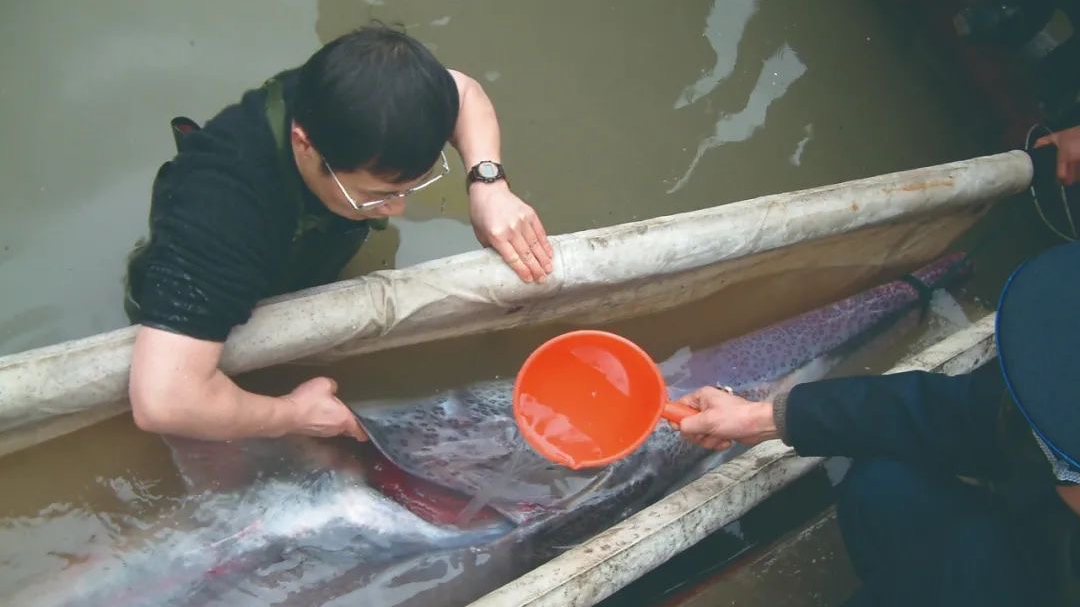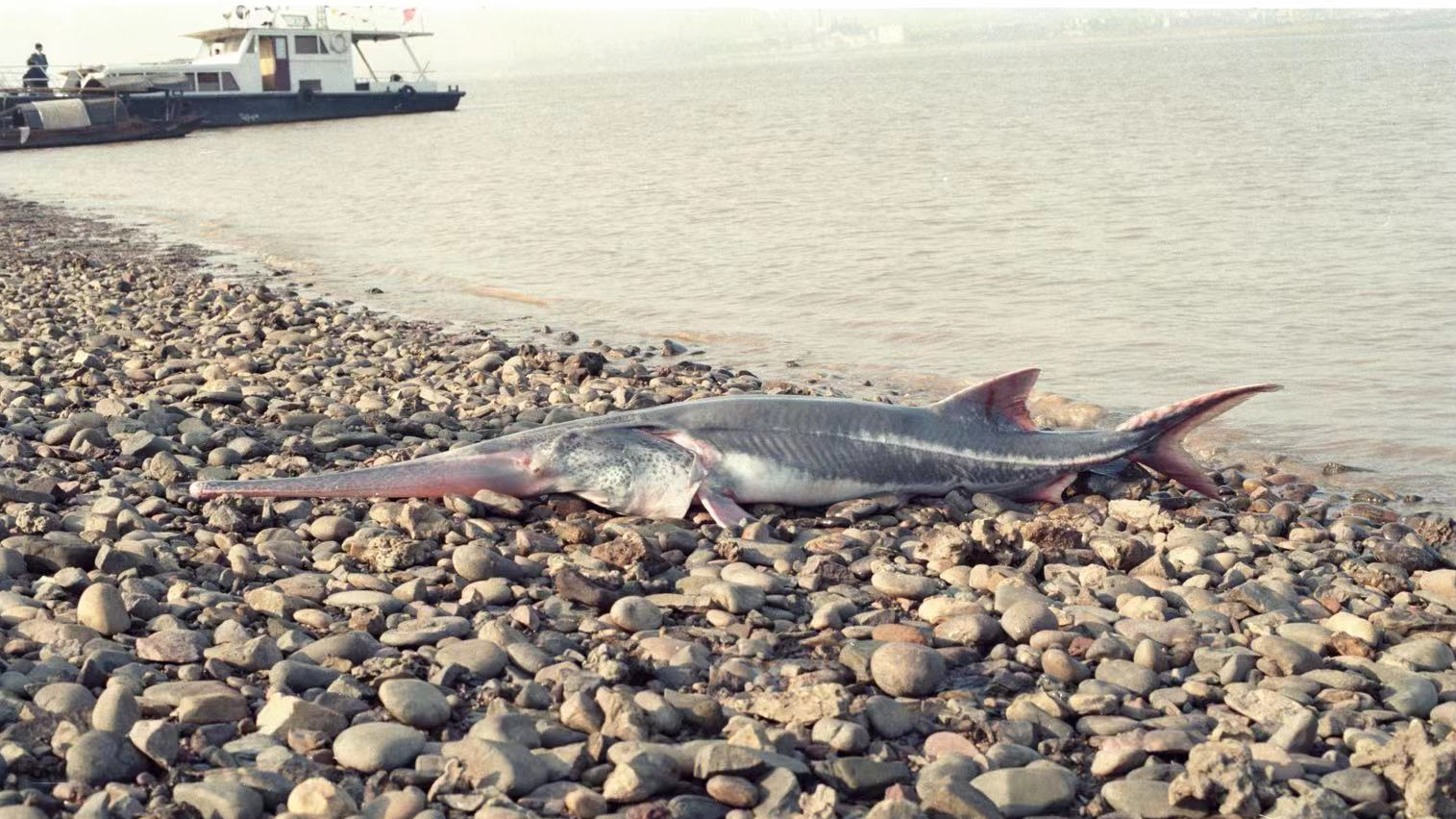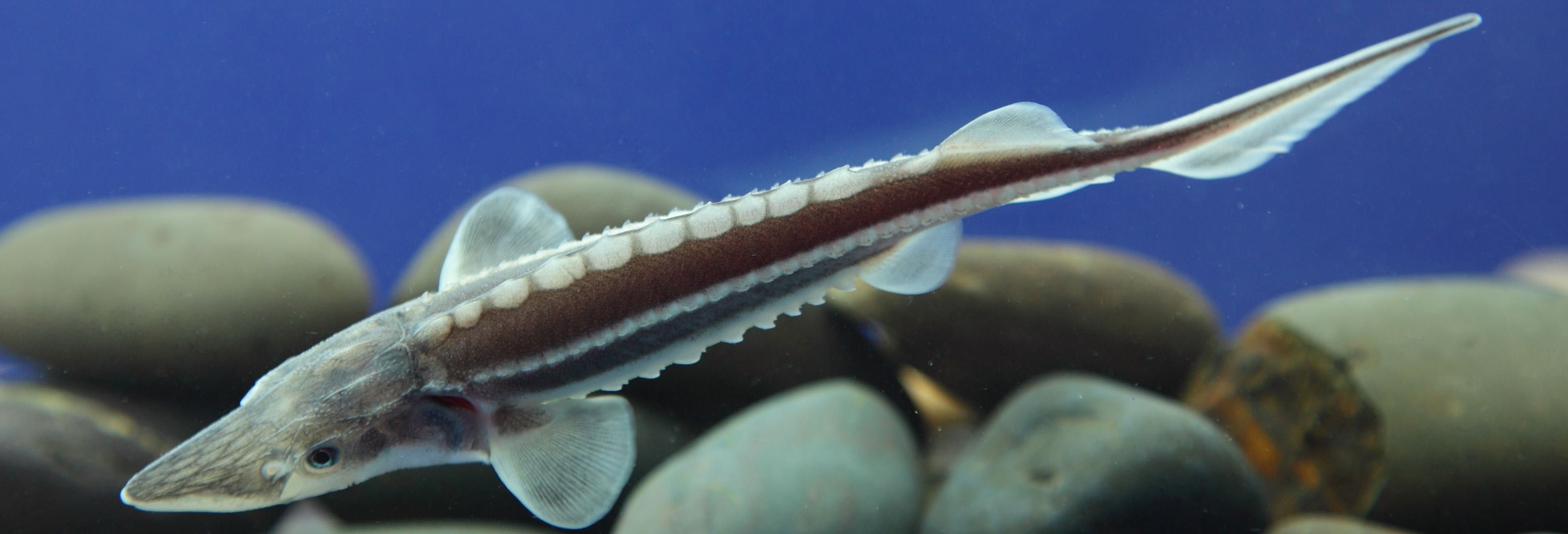As the International Union for Conservation of Nature (IUCN) declared the extinction of the Chinese paddlefish on its updated Red List of threatened species on Thursday, the news quickly became trending on Chinese social platforms, with many expressing condolences over the loss of this species.
The news is actually not new. Back in 2019, a study by Chinese researchers already estimated that this freshwater fish species native to the Yangtze River probably went extinct between 2005 and 2010. Although the Chinese paddlefish was last seen alive in 2003 and there has been no evidence of the species existing since then, more time was needed for scientific verification to officially declare the extinction of the species.

Wei Qiwei and and his research team rescue the last Chinese paddlefish in Yibin City, southwest China's Sichuan Province, 2003.
Wei Qiwei and and his research team rescue the last Chinese paddlefish in Yibin City, southwest China's Sichuan Province, 2003.
Wei Qiwei, the leader of the study and a professor at Yangtze River Fisheries Research Institute of the Chinese Academy of Fishery Sciences (Wuhan), has studied sturgeons for nearly 40 years, and has taken part in the IUCN's assessment of sturgeons in China since 1996.
"To declare a species extinct means that the last individual has died and the survey should be over a time frame appropriate to its life span. In the case of the Chinese paddlefish, it can live for about 40 years. The last Chinese paddlefish we found in 2003 was about three meters long, and was estimated to be over 20 years old. It would be dead in less than 20 years, which is about now," Wei told CGTN.
The Chinese paddlefish is one of the largest freshwater fish in the world, and can grow up to seven meters. Their large size and small population in the wild made it hard to artificially breed them. Wei mentioned that they have tried to artificially breed the Chinese paddlefish in the 1990s but failed, and it was even difficult to raise the fish for over a month.

A Chinese paddlefish was found in Yichang City, central China's Hubei Province, 1993.
A Chinese paddlefish was found in Yichang City, central China's Hubei Province, 1993.
The Chinese paddlefish became extinct before it could be artificially bred, but its extinction serves as a warning call to protect other freshwater species like the Chinese sturgeons and the Yangtze sturgeons. On the renewed list, the Yangtze sturgeon was announced as being "extinct in the wild" and the Chinese sturgeon was "critically endangered."
According to Wei, large number of artificially-bred Yangtze sturgeons and Chinese sturgeons have been released into the Yangtze River in recent decades. Three nature reserves are built to especially protect these sturgeons, including the National Nature Reserve for the Rare and Endemic Fishes in the Upper Reaches of the Yangtze River, the Chinese Sturgeon Nature Reserve in Yichang, central China's Hubei Province and the Yangtze River Estuary Chinese Sturgeon Nature Preserve.

A young Yangtze sturgeon.
A young Yangtze sturgeon.
The Chinese paddlefish had outlived dinosaurs but could not live through modern times. There is still hope to save other endangered sturgeons like the Chinese sturgeons and the Yangtze sturgeons and bring them back from the brink of extinction. Only through collective efforts, can we avoid regrets.
(All photos are courtesy of Wei Qiwei)
(If you want to contribute and have specific expertise, please contact us at nature@cgtn.com.)

